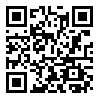Volume 5, Issue 2 (Vol 5, No 2 (16) 2024)
2024, 5(2): 15-25 |
Back to browse issues page
Download citation:
BibTeX | RIS | EndNote | Medlars | ProCite | Reference Manager | RefWorks
Send citation to:



BibTeX | RIS | EndNote | Medlars | ProCite | Reference Manager | RefWorks
Send citation to:
Ranjdoust S, Khezri Dankhe Z, Baradari N. (2024). Studying the Differences between Educational Expectations of Sixth-Place Students of Teachers, Parents and Classmates of Electronic Learning Content. Journal of Childhood Health and Education. 5(2), : 2 doi:10.32592/jeche.5.2.15
URL: http://jeche.ir/article-1-166-en.html
URL: http://jeche.ir/article-1-166-en.html
1- Associate Professor Department of curriculum planinng,Marand branch,Islamic Azad University,Marand,Iran.
2- Doctoral student of Curriculum Planning, Marand Unit; Islamic Azad University, Marand, Iran.
2- Doctoral student of Curriculum Planning, Marand Unit; Islamic Azad University, Marand, Iran.
Abstract: (983 Views)
Background and Aim: This research was conducted with the aim of investigating the educational expectations of teachers, parents and classmates from the educational content of e-learning in the elementary school of Ashnoye city.. Methods: The current research was applied in terms of purpose and analytical survey research in terms of method. The statistical population of this research included all 1221 sixth grade students of Ashnoye city. 281 people were selected by random sampling with the help of Karjesi and Morgan’s table. In this study, a researcher-made questionnaire based on the educational expectations of teachers, parents and classmates was used. In order to estimate the validity of the questionnaire and the questions asked in it, from the point of view of the supervisor, experts and professors familiar with the research subject and the questionnaire, the reliability of this tool was calculated as 0.70 using Cronbach’s formula. The statistical analysis method of this research is using correlation t test. Results: Considering the findings from the assumptions and results obtained from the table, there is a significant difference between the educational expectations of teachers, parents and classmates regarding the educational content of e-learning. E-learning creates interaction between the teacher and students, which in turn increases the motivation to learn and remember information in students. Conclusion: The results confirm that the educational attitudes and expectations of teachers, parents and classmates regarding the educational content of e-learning. E-learning has a huge difference, which weakens the interaction of the educational system components with each other and reduces the efficiency of e-learning, therefore, it is necessary for all components to be connected with each other in order to synergize learning
Article number: 2
Type of Study: Applicable |
Subject:
Special
Received: 2023/09/21 | Accepted: 2023/11/12 | Published: 2024/05/24
Received: 2023/09/21 | Accepted: 2023/11/12 | Published: 2024/05/24
Send email to the article author
| Rights and permissions | |
 |
This work is licensed under a Creative Commons Attribution-NonCommercial 4.0 International License. |



